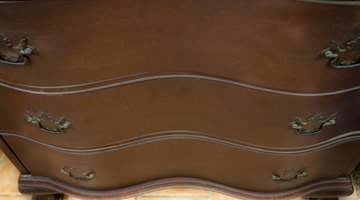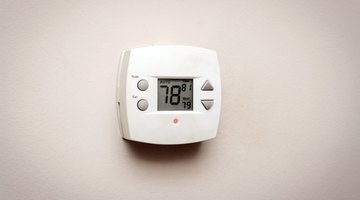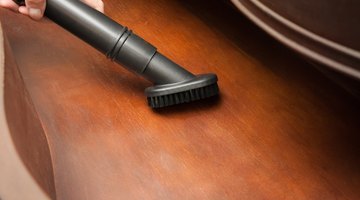How to Prevent Mildew in Drawers
Mildew thrives in moist, dank areas that do not have adequate ventilation, such as cabinet or dresser drawers. Keep conditions in your home and inside the furniture dry to prevent mildew growth; otherwise, items stored in the drawers may become musty and moldy or mildewed.

Mildew, a form of mold, may aggravate allergy or asthma symptoms of those sensitive to such allergens.
Dry the Environment

Humid conditions are exactly what mildew needs to exist. If the humidity or moisture level in your home is too high, mildew may develop. If the air outdoors is humid and you do not have a dehumidifier or air conditioner in your home, the air inside is most likely humid as well. Small units designed to dehumidify or air condition one room are an option if your residence does not have central air conditioning. A portable dehumidifier collects moisture and deposits it as water into a pan or tray, so be prepared to empty it every day or two, or whenever the unit shuts itself off.
Clean, Dry Drawer Contents

Even if your indoor air is not humid, mildew may occur in the drawers if the items kept in them are damp or wet. Be sure clothing, blankets or pillows stored in the drawers are completely dry before you put them away. Dirty items may also contribute to mildew growth. For instance, a tablecloth containing a food stain or a blanket with grass embedded between the folds provides an attractive environment for mildew: Molds thrive on organic matter. Wash and completely dry fabrics before storing them in drawers. Old books or items that smell musty should not be stored in a drawer; musty odors usually mean mold or mildew is already present. Stashing the item in a drawer may make the mildew spread to other items in the drawer or onto the furniture.
Circulate the Air

Open the drawers every few weeks or so for items kept in long-term drawer storage to get fresh air in the drawers. Turn on a ceiling fan or portable fan in the room as well. Remove items from the drawers and spread them out on a table or on the ground as you aerate the drawers; this also helps prevent odors from building up on stored items such as towels or bedding. Remove the drawers completely from the dresser or cabinet, if possible, for even more air flow. Aerate the drawers and contents on a non-humid day or while using an air conditioner or dehumidifier.
Treating Mildewed Drawers

If small specks or spots are visible on or in the drawers and the furniture smells musty, mildew is present. Remove the drawers and take them outdoors on a dry day. Remove paper or cloth liners and discard them; then vacuum the drawers with an upholstery brush attachment. Wear a dust mask to avoid breathing in mold spores; then wash the upholstery brush outdoors. Replace the vacuum cleaner filter to prevent spores from spreading elsewhere. Allow the drawers to air out in a sunny area all day, if possible. Spritz them with a fine mist of vinegar, which helps absorb the odor. To clean the drawers, wipe them down with a cloth dipped in mildly soapy water and wrung out; then wipe again with a slightly damp sponge. Wipe the drawers dry with clean rags or old towels; then allow them to air-dry for several hours before putting them back into the furniture. If the drawers cannot be removed from the furniture, open them all the way and clean them in place.
The Drip Cap
- Mildew thrives in moist, dank areas that do not have adequate ventilation, such as cabinet or dresser drawers.
- Keep conditions in your home and inside the furniture dry to prevent mildew growth; otherwise, items stored in the drawers may become musty and moldy or mildewed.
- Humid conditions are exactly what mildew needs to exist.
- If the humidity or moisture level in your home is too high, mildew may develop.
- Dirty items may also contribute to mildew growth.
- Allow the drawers to air out in a sunny area all day, if possible.
- Wipe the drawers dry with clean rags or old towels; then allow them to air-dry for several hours before putting them back into the furniture.
References
Resources
Writer Bio
Kathy Adams is an award-winning writer. She is an avid DIYer that is equally at home repurposing random objects into new, useful creations as she is at supporting community gardening efforts and writing about healthy alternatives to household chemicals. She's written numerous DIY articles for paint and decor companies, as well as for Black + Decker, Hunker, Landlordology, SFGate and others.
Photo Credits
- Michael Gann/Demand Media
- Michael Gann/Demand Media
- Michael Gann/Demand Media
- Michael Gann/Demand Media
- Michael Gann/Demand Media
- Michael Gann/Demand Media
More Articles



